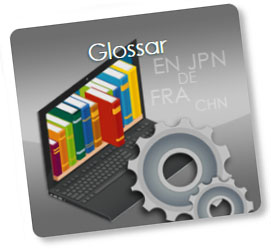speedikon® C – and, of course, the complete C – platform – is developed for a multi-language use. The customer can switch between standard languages such as German, English and French directly in the system.
Furthermore, many of our customers use the software in additional languages.
For this we have developed the Glossary: Here, slots with further languages such as Chinese, Japanese or Russian, are located. These slots are very flexible and can also be extended with any desired language.
The customer-admin can check, monitor and control the used languages. He also has the ability to set a reference language for translation work – since, depending on the language region, translating from English or French into the desired language could be advantageous rather than translating from the German language. Furthermore, the admin has a clear overview of already translated slots within the data base / software or still pending translation work.
This is in particular important in terms of customising. The system will not automatically know what a headlamp means, which was originally created as an object by the client himself, in further languages. It is also possible, for example, that further standard-texts are added after an update which are also applicable for the colleagues from China.
This is where the Glossary comes in handy!
The customer can filter the lists for pending translations. These lists are exportable to Excel, Word, etc. and can be translated (also externally) in this format. Of course, these lists can then be re-imported back into the system.
The imported lists are easily managed and updated via the systems interface. An important side-note at this point is that the texts of standard entries can be edited as well! This also happens in the customer specific area of the data base and is therefore just as update-safe as the customising or the not language-dependant entries themselves.
This way our customers can use our system in their preferred languages such as Chinese, Japanese or any other desired lingo. If cross-language systems are operated it is important, that selection catalogues are used. Only this way a direct comparison of the respective entry is possible.
